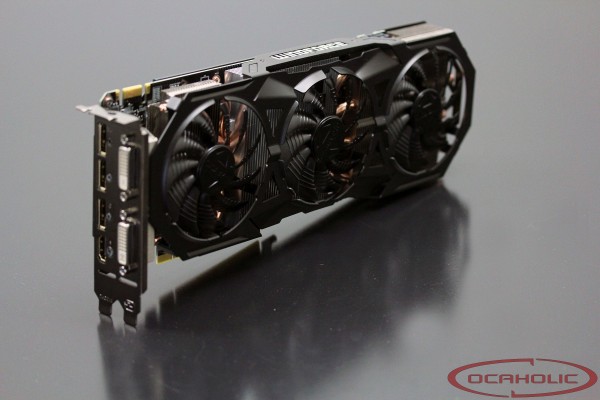
 Gigabyte is amongst the select NVIDIA board partners that offer new Maxwell based high-end graphics cards from day one. The GTX 960 G1 Gaming ships with Gigabyte’s latest Windforce cooler, which should be well capable of keeping the card cool at low temperatures. Apart from that there is a custom design PCB, so this pixel cannon looks like a really interesting contender.
Gigabyte is amongst the select NVIDIA board partners that offer new Maxwell based high-end graphics cards from day one. The GTX 960 G1 Gaming ships with Gigabyte’s latest Windforce cooler, which should be well capable of keeping the card cool at low temperatures. Apart from that there is a custom design PCB, so this pixel cannon looks like a really interesting contender.
Gigabyte is one of the first Nvidia add-in-card (AIC) partners that have decided to introduce a new custom GTX 960 graphics card that will use NVIDIAs latest and greatest GM206 chip. For this graphics card, Gigabyte makes use of a custom PCB paired up with its own custom Windforce 3X 300W cooler and on the flip-side of the card, there is a backplate with G1 Gaming design. A quick look at the specs also reveals that the card ships factory overclocked.
As always before the launch of a new chip generation from NVIDIA there have been loads of rumors on the specs before the launch. Browsing the specifications of this card we find 1024 CUDA cores, 85 TMUs and 32 ROPs. Looking for reference clocks we find 1’126 MHz core clock and 1’178 MHz boost clock.

As you can see from the GPU-Z screenshot below, Gigabyte decided to use a rather beefy high factory-overclock on the new GTX 960 G1 Gaming. While the reference GTX 960 with GM206 GPU is set to work at 1’126 MHz for the base clock and 1’178 MHz for the GPU Boost clock, the Gigabyte GTX 960 G1 Gaming runs at 1’241 MHz core clock and 1’392 MHz boost clock.
When it comes to memory clock speeds we see a tiny, 12 MHz frequency boost, which makes the chips run at 7’012 MHz. Combine this with a 128 Bit memory interface and you end up with a total of over 112 Gigabyte of memory bandwidth, the Samsung memory on the new GTX 960 can be overclocked by factoy to at least 1800MHz instead of 1750MHz without any issue.
While the typical boost clock is set at 1’178 MHz, the maximum boost of 1’392 MHz was achieved quite easily and the GTX 960 G1 Gaming held that clock most of the load time due to the capable Windforce 3X 300W cooler as well as good TDP target (nVidia’s Boost technology being power-based and not temperature-based on this card). At this point we also run Furmark to see how high the card overclocks, when the GPU is under full load. This way we can determine a worst case scenario regarding maximum boost clock. With the card we see clocks speeds of 1’392 MHz at 1.2v.

| Gigabyte G1 Gaming GTX 960 | GeForce GTX 960 | ASUS GTX 960 STRIX OC Edition | GeForce GTX 760 | |
| Chip | GM206-300-A1 | GM206-300-A1 | GM206-300-A1 | GK104 Kepler |
| Process | 28 nm | 28 nm | 28 nm | 28 nm |
| Transistors | 2.94 billion | 2.94 billion | 2.94 billion | 3.54 billion |
| GPU clock | 1’241 MHz | 1’126 MHz | 1’253 MHz | 960 MHz |
| GPU Boost clock | 1’392 MHz | 1’178 MHz | 1’404 MHz | 1’033 MHz |
| Memory GDDR5 | 2’048 MB | 2’048 MB | 2’048 MB | 2’048 MB |
| Memory clock | 1’703 (7’012) MHz | 1’750 (7’010) MHz | 1’800 (7’200) MHz | 1’500 (6’000) MHz |
| Memory interface | 128 Bit | 128 Bit | 128 Bit | 256 Bit |
| Memory bandwidth | 112’200 MB/s | 112’160 MB/s | 115’200 MB/s | 192’200 MB/s |
| TMUs | 85 | 85 | 85 | 96 |
| Shader Cores | 1024 | 1024 | 1024 | 1’152 |
| ROPs | 32 | 32 | 32 | 32 |
| TDP | 160 Watt | 120 Watt | 120 Watt | 170 Watt |
| Slots | 2 | 2 | 2 | Reference Design |
| Cooler | WindForce 3X 300W | NVIDIA Reference | DirectCU II | NVIDIA Reference |